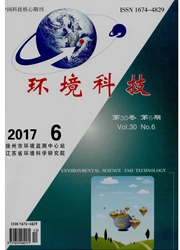

 中文摘要:
中文摘要:
构建了一种基于升流式厌氧污泥床反应器(UASB)的微生物燃料电池(MFCs),利用UASB高效去除COD能力及连续进样方式,获得稳定电能输出。考察了水力停留时间、进液方式、电极材料、离子交换膜种类、溶液离子强度等因素对于MFCs性能的影响。实验结果表明:在水力停留时间6h、连续进液、高纯石墨板电极以及均相阳离子交换膜条件下,连续运行3个月,放电功率稳定在145mW/m^2,开路电压0.78V,放电电流最高可达321mA/m^2。
 英文摘要:
英文摘要:
A microbial fuel cells (MFCs) was constructed using up-flow anaerobic sludge bed (UASB) as the anode chamber. A stable electric output could be attained with continuous feeding of wastewater and high removal efficiency of COD by UASB. The effects of hydraulic residence time, feeding mode, electrode material, ion-exchange membrane, ion strength of solution and other parameters were investigated. The results showed that a power output of 145 mW/m^2 and an open voltage of 0.78V could be achieved with a maximum current of 321 mA/m^2 using high-purity graphite plates as electrodes, homogeneous ion exchange membrane and continuous feeding mode with an hydraulic residence time of 6h.
 同期刊论文项目
同期刊论文项目
 同项目期刊论文
同项目期刊论文
 期刊信息
期刊信息
